Your Lemons Are Wasting Away: A Pro’s Guide to Unlocking Their Real Power
I spent a huge chunk of my early career in bustling professional kitchens, where every single ingredient had to pull its weight. Waste was the ultimate sin. The lemon that garnished a cocktail one night would be scrubbing a copper pot bright and shiny the next morning. That kind of thinking sticks with you. You learn to see things for what they really are—a lemon isn’t just a sour fruit, it’s a powerhouse of acid and potent oils.
In this article
But honestly, when I started showing home cooks the ropes, I noticed a pattern. People either let their lemons shrivel up in the fridge or used them in ways that just didn’t work. So much of the advice floating around online misses the crucial details, the why behind the hack. This guide is my shot at fixing that. We’re going to dive into what makes a lemon tick, cover the pro-level techniques I swear by, and I’ll be straight with you about when a lemon is the WRONG tool for the job. Because knowing what not to do is half the battle.
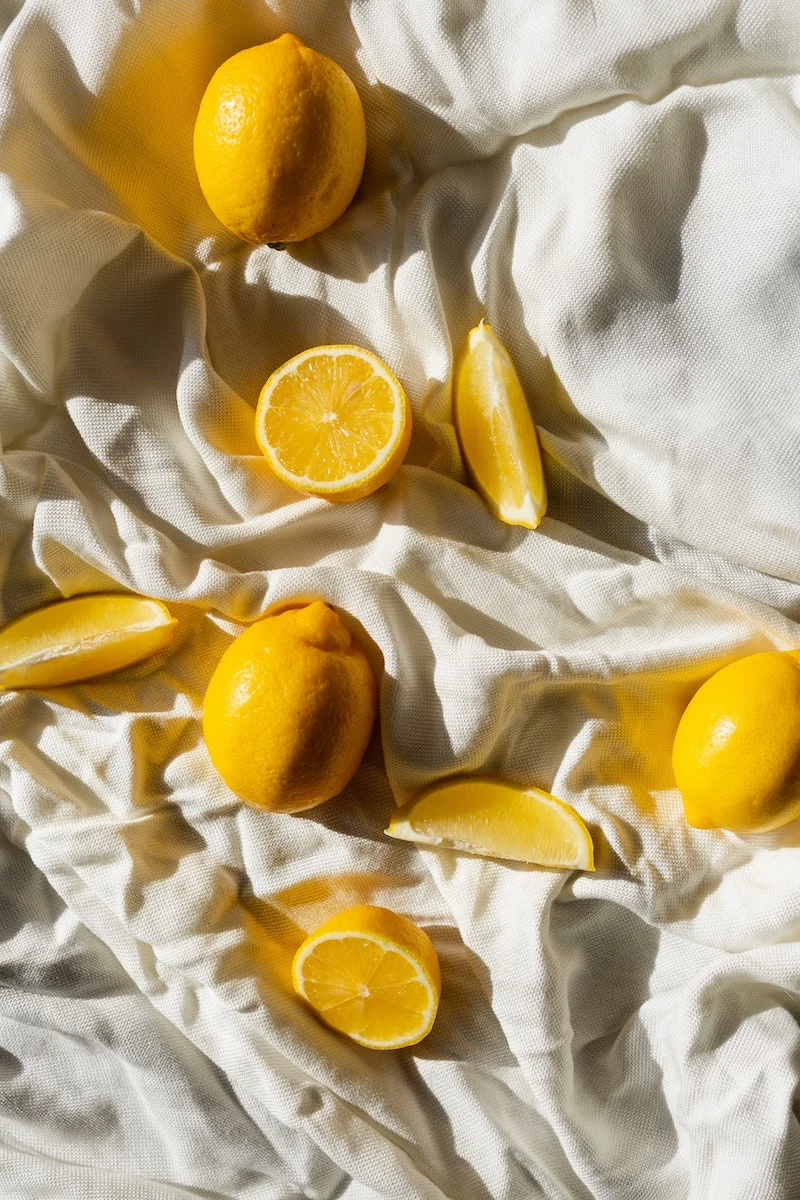
First, Why Does a Lemon Even Work?
Before you use any tool, you need to know how it operates. A lemon’s cleaning and preserving magic comes down to a few key ingredients inside it. Get these, and your results will go from hit-or-miss to reliably awesome every time.
- Citric Acid: The Limescale Lifter. This is the main player. Lemon juice is super acidic (with a pH between 2 and 3), and that’s its superpower. It’s a master at grabbing onto and dissolving mineral deposits. Think of that crusty white buildup on your faucet or in your kettle—that’s limescale. The citric acid chemically breaks it down, so you can just wipe it away. It’s no wonder so many “green” cleaners use it as a key ingredient.
- Ascorbic Acid: The Anti-Browning Shield. You know this one as Vitamin C. It’s a powerful antioxidant that stops oxidation in its tracks. When you slice an apple, enzymes in the fruit react with oxygen, causing that ugly brown color. A little lemon juice swoops in and reacts with the oxygen first, acting as a bodyguard. It’s the simple secret to keeping your guacamole vibrant and your apple slices fresh.
- d-Limonene: The Grease-Cutter in the Peel. Ever zest a lemon and get that fragrant, oily stuff on your fingers? That’s d-Limonene, a natural solvent that lives in the peel. It’s incredibly good at cutting through grease and oil. In fact, this compound is used in heavy-duty industrial hand cleaners and degreasing sprays. So when you scrub with the peel, you’re adding a serious degreasing punch to the acidic juice.
Oh, and the big question: fresh vs. bottled juice? Look, for cleaning, fresh is always best. You’re getting the most potent, unadulterated acid and oils. But if you’re in a pinch, that little plastic lemon from the fridge can work for tasks like descaling a kettle. Just know it might be less effective because of preservatives, and you’ll miss out on the degreasing power of the peel.
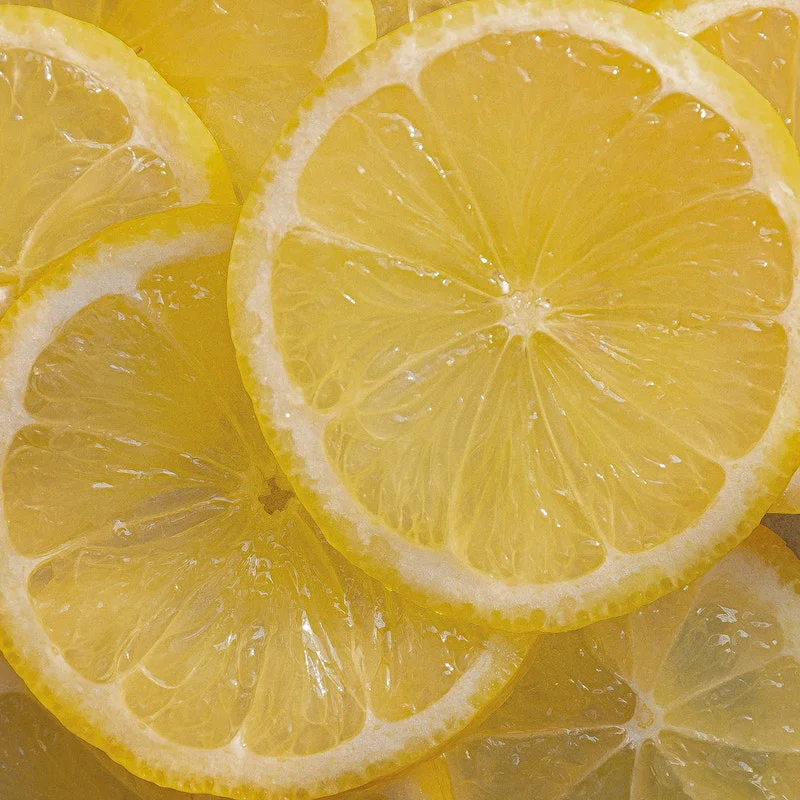
Need a Win? Try These 5-Minute Lemon Fixes
Feeling intimidated? Don’t be. Sometimes you just need a quick, satisfying win. Here are a couple of my favorite super-fast tricks.
- Sparkling Stainless Steel Sink: After you’ve squeezed a lemon for a recipe, don’t toss it! Take the used half and rub it all over your stainless steel sink and faucet. The acid lifts water spots and grime. Give it a quick rinse and wipe dry with a microfiber cloth. Bam, instant shine.
- Effortless Microwave Cleaning: Cut a lemon in half and squeeze the juice into a microwave-safe bowl with about a half-cup of water. Toss the lemon halves in, too. Microwave on high for 3-4 minutes, or until the water is boiling and the microwave is steamy. Let it sit with the door closed for 5 minutes. The steam will have softened all the caked-on gunk, and you can just wipe it clean. Plus, it smells amazing.
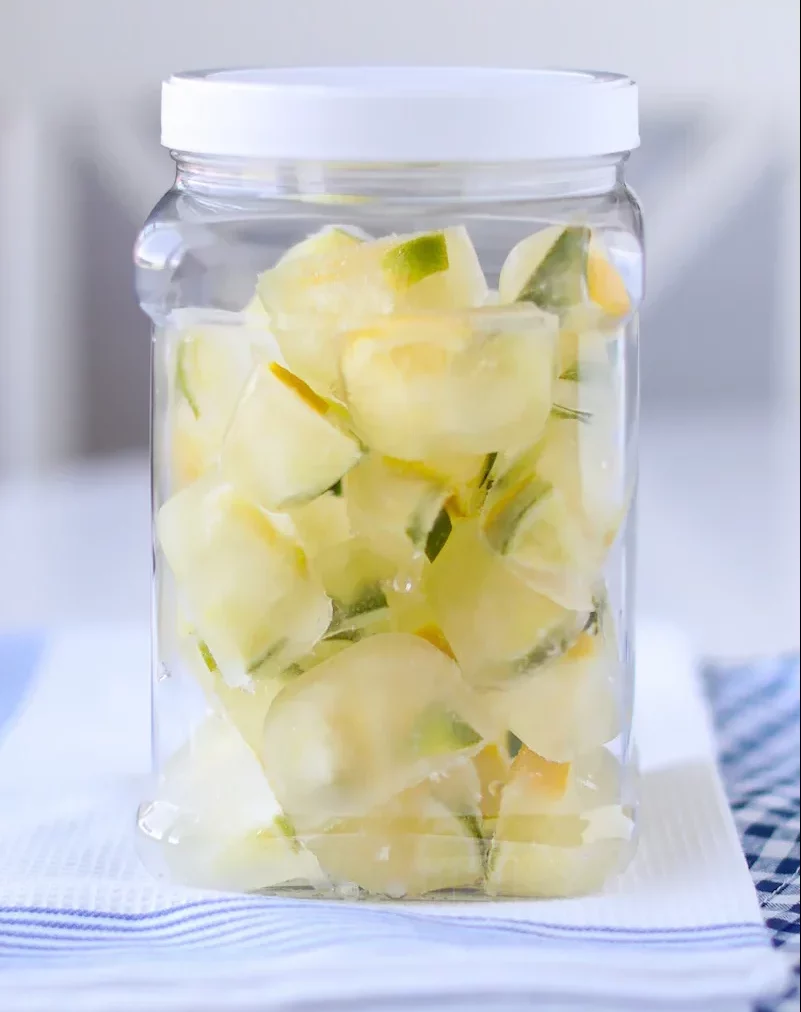
Pro-Level Techniques for Your Home
Alright, let’s get down to the serious stuff. These are the methods that deliver real results, with all the important details included.
Reviving a Stinky Garbage Disposal
That funky smell from your disposal is usually from grease and food bits clinging to the grinding chamber. This two-step process gets it truly clean.
What You’ll Need:
- A little dish soap
- An ice cube tray
- White vinegar
- 1 leftover lemon
First, get rid of the grease. Turn on the hot water and let it run into the disposal for about 30 seconds. Squirt in some dish soap and let the disposal run with the hot water for another minute. This flushes out the initial layer of grime.
Now for the real magic. Forget the myth that ice sharpens the blades (they’re blunt impellers, not knives). The ice acts as a powerful mechanical scrubber, blasting gunk off the walls. Here’s how to make it even better:
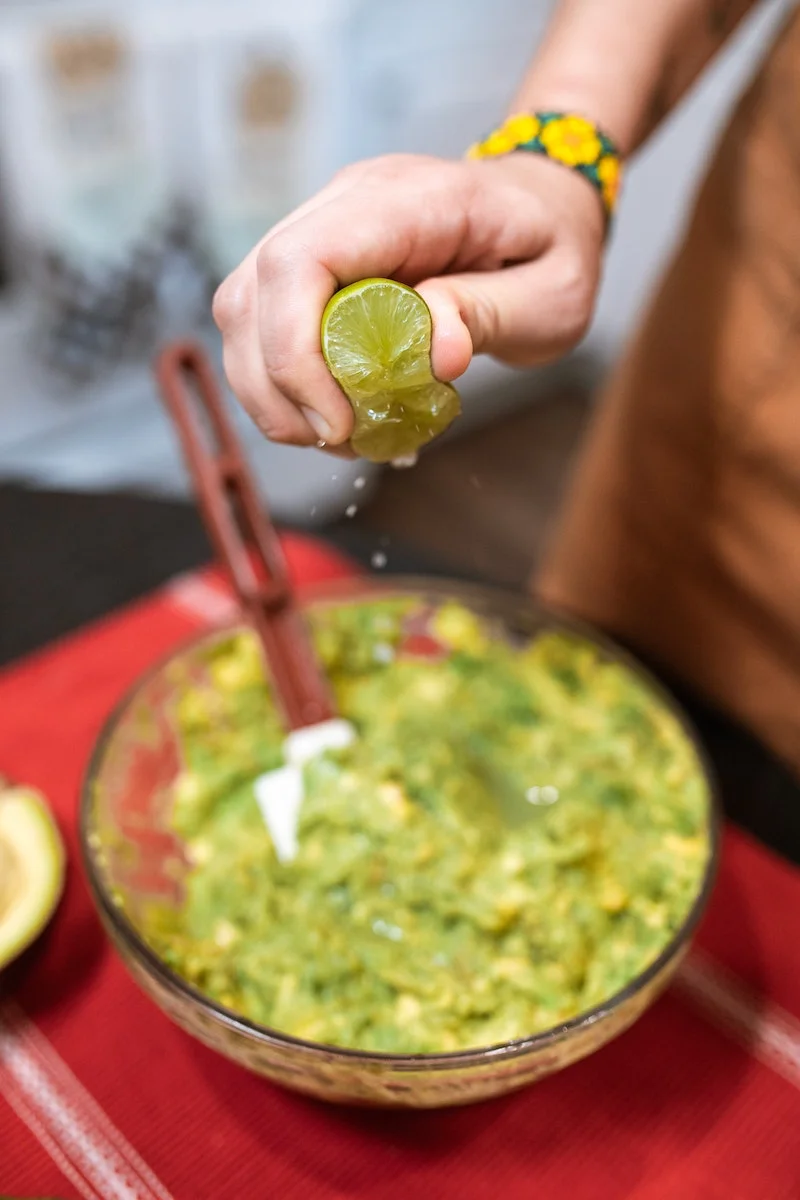
- Fill an ice cube tray halfway with white vinegar.
- Toss a small chunk of lemon—peel and all—into each section.
- Top off with water and freeze solid.
Once they’re frozen, turn on the cold water, run the disposal, and drop in 3-4 cubes. The combination of the ice scrubbing, the vinegar’s acid, and the lemon’s acid and degreasing oil is a total knockout punch. Doing this for 5 minutes every week or two can save you a hefty plumber’s bill.
Heads up! Don’t just shove a whole lemon half down there. The machine can handle small pieces, but a large, fibrous peel can sometimes jam the motor. Stick to small chunks.
Sanitizing and Restoring Cutting Boards
A clean cutting board is non-negotiable. Here’s how to tackle it based on the material. This whole process takes about 15 minutes of active work, plus drying time.
For Wooden Boards (The Deep Scrub):
What You’ll Need:

- Coarse salt (kosher or sea salt is perfect)
- Half a lemon
- A bench scraper or spatula
- Food-grade mineral oil or board cream
Wood is porous, so you need to get into those knife grooves. Start with a clean, dry board. Sprinkle a generous layer of coarse salt over it. Now, take your lemon half and use the cut side to scrub the board vigorously, squeezing the juice as you go. You’ll feel the salt scouring the surface and creating a slurry that lifts stains. Let that sit for 5-10 minutes. Then, scrape it all off and give the board a good rinse with hot water.
This next step is CRITICAL: Dry the board immediately with a towel. Then, you must re-oil it. The scrub stripped its protective oils. Apply a food-grade mineral oil (you can find this at places like Home Depot or kitchen supply stores for about $8-12 a bottle) or a specialized board cream. A common mistake is using cooking oil like olive or vegetable oil—don’t do it! It can go rancid and make your board smell funky. Let the mineral oil soak in overnight, then wipe off the excess.
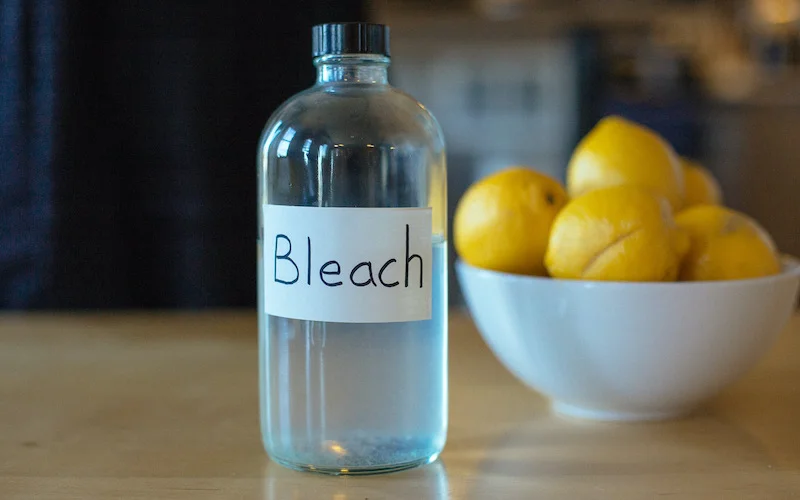
For Plastic Boards (The Sun-Bleach Method):
Plastic stains easily but isn’t porous. For this, we use the power of the sun. Just wash the board, then rub a lemon half all over the stained areas. Place it outside in direct sunlight for 4-8 hours. The combination of the acid and UV rays naturally bleaches out stains from things like berries or tomato sauce. Bring it in, wash it one more time, and you’re done.
Lemon vs. Vinegar: When to Use Which?
People often lump these two together, but they have different strengths. Think of them as specialists.
Lemon is your go-to when smell and degreasing matter. Its fresh scent is a huge plus for deodorizing a garbage disposal or microwave. And remember that d-limonene in the peel? That makes it a better choice for tasks where you need to cut through a bit of grease, like polishing a stainless steel sink.
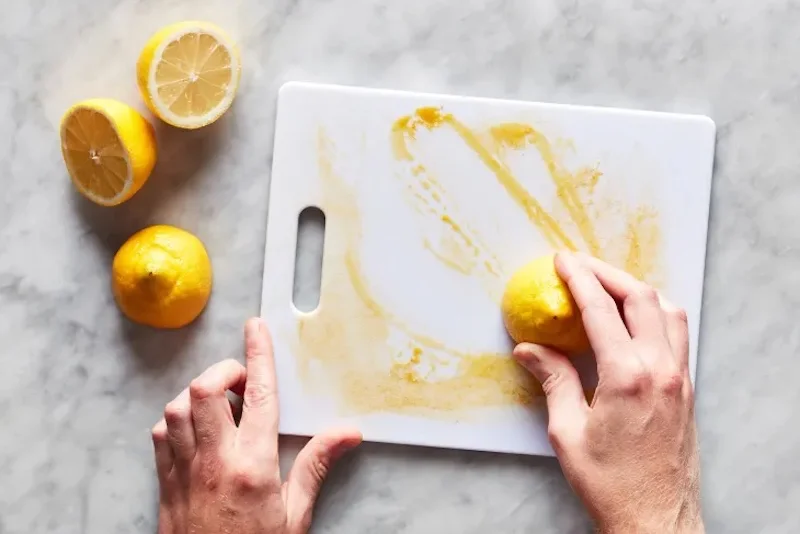
Vinegar, on the other hand, is the heavy-hitter for mineral deposits. Its acetic acid is incredibly effective, and since it’s usually bought in big, cheap jugs, it’s the more economical choice for large-volume tasks like descaling a coffee maker or using it as a rinse aid in the dishwasher. Its pungent smell fades, but it’s definitely less pleasant to work with.
But here’s the golden rule for both: NEVER use them on natural stone like marble or limestone. The acid will permanently etch and dull the surface. Stick to pH-neutral cleaners for those materials.
Seriously, Don’t Use Lemon On These Surfaces
A pro knows a tool’s limitations. Using lemon on the wrong thing can cause irreversible damage. I once saw a client destroy a brand-new marble countertop by wiping it down with lemon water. The only fix is a costly professional re-polishing. Don’t let that be you.
- Natural Stone: Absolutely no lemon on marble, limestone, or travertine. It will cause etching, which is a chemical burn on the stone’s surface.
- Hardwood Floors: I know some sites recommend it, but please don’t. The acid can slowly eat away at the polyurethane finish that protects your wood, leaving it dull and vulnerable to water damage.
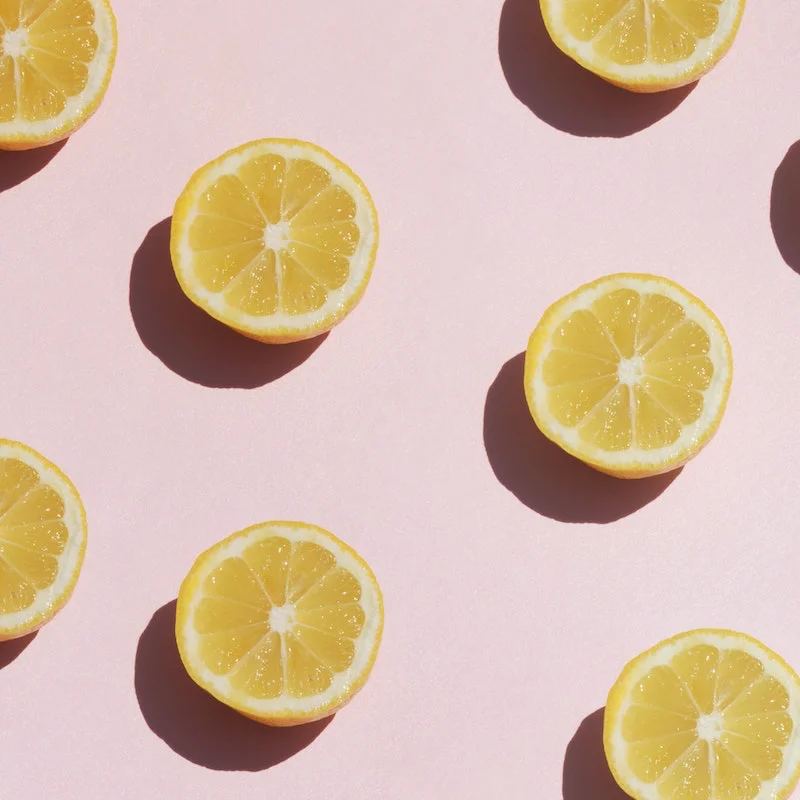
Critical Safety Warnings (No, Really)
- The Margarita Burn: There’s a nasty skin condition called phytophotodermatitis. It sounds complicated, but it’s simple: if you get juice from certain plants (like lemons or limes) on your skin and then go in the sun, you can get a serious chemical burn. This is why you should always wash your hands thoroughly after making margaritas on a beach day. It’s no joke.
- Protect Your Teeth: Sipping on lemon water all day is trendy, but the constant exposure to acid can erode your tooth enamel, and that doesn’t grow back. Quick tip: use a straw to bypass your teeth, and rinse your mouth with plain water when you’re done.
A Pro-Level Project: Salt-Preserved Lemons
If you have a bunch of lemons, don’t let them go to waste. Preserving them in salt is an amazing traditional technique that transforms them into a savory, complex ingredient with none of the sharp sourness. They’re incredible in stews, dressings, and marinades.
What You’ll Need:
- 4-5 Meyer lemons (their thin skins are perfect for this)
- About 1/2 cup of kosher or sea salt (never iodized)
- A clean 1-quart glass jar with a tight lid
First, wash the lemons well. Cut them in quarters from the top down, but not all the way through—leave them connected at the base. Now, pack the inside of each lemon generously with salt. Shove the salt-packed lemons into your jar, pressing them down hard to release their juices. Sprinkle more salt between the layers.
Once the jar is full, top it off with more fresh lemon juice until the lemons are totally submerged. Seal it up and let it sit at room temperature for 3-4 weeks, giving it a gentle shake each day. They’re ready when the rinds are soft. Store them in the fridge, and they’ll last for up to a year. To use one, just rinse off the salt and finely chop the rind. You’ve just turned a simple fruit into a flavor bomb.
So there you have it. The humble lemon is a fantastic tool, but only when you respect its power. By understanding how it works and where its limits are, you can use it with the confidence of a pro—saving money, reducing waste, and making your home a little brighter.
Inspirational Gallery with Photos
- Roll the lemon firmly on the counter with your palm.
- Microwave it for 10-15 seconds before cutting.
- Slice it lengthwise, not across the middle.
The secret to maximizing juice? Breaking down the cell membranes inside the fruit. These three pro-kitchen tricks will ensure you get every last drop, every single time.
Can I really use lemons on my wooden cutting board?
Absolutely, it’s one of the best tricks in the book. After washing your board, sprinkle it with coarse salt (like Morton Coarse Kosher Salt). Cut a lemon in half and use it to scrub the salt into the board. The salt acts as an abrasive, while the lemon’s citric acid lifts stains and neutralizes odors from things like garlic and onion. Let it sit for 5-10 minutes, then scrape the residue off and rinse with hot water. Your board will be cleaner and smell fresher.
The United States is one of the world’s top producers of lemons, with California and Arizona accounting for over 95% of the entire U.S. crop.
This massive domestic production means the lemons in your local grocery store are often fresher and more potent than you might think. Unlike fruits that travel thousands of miles, a shorter supply chain ensures the volatile oils in the peel and the high acidity of the juice remain at their peak, making them perfect for both culinary and cleaning tasks.
Meyer Lemon: Known for its thinner, smoother skin and deeper yellow-orange color. It’s less acidic and has a sweeter, more floral taste, making it a favorite for desserts like tarts and sorbets. Its peel has less of the bitter white pith.
Eureka Lemon: This is the classic, tart supermarket lemon with thick, textured skin. Its high acidity is perfect for cleaning, creating a potent vinaigrette, or preserving sliced apples. The thick peel also makes it ideal for zesting.
Choose Meyer for flavor complexity, Eureka for acidic punch.
Create a simmer pot to banish lingering cooking odors and fill your home with a clean, uplifting scent. Simply slice one or two lemons and add them to a small saucepan with a few sprigs of fresh rosemary and a splash of vanilla extract. Cover with water, bring to a gentle simmer, and let it work its magic. It’s a completely natural, chemical-free alternative to commercial air fresheners.
Important warning: Never use lemon juice on natural stone surfaces. The very citric acid that makes it a limescale-busting hero will permanently etch and dull materials like marble, travertine, or limestone countertops and floors. It reacts with the calcium carbonate in the stone, creating a dull spot that can’t be wiped away. For these surfaces, stick to a pH-neutral cleaner specifically designed for stone.
Want to make your own non-toxic degreasing spray? It’s easier than you think. Preserve the peels from several lemons in a glass jar.
- Cover the peels completely with plain white vinegar.
- Seal the jar and let it infuse in a dark place for 2-3 weeks.
- Strain the liquid into a spray bottle.
The d-Limonene from the peels will have infused into the vinegar, creating a powerful, fragrant cleaner that cuts through grease on stovetops and backsplashes.
d-Limonene, the primary chemical compound in lemon oil, is so effective as a solvent that it’s used industrially in products like Goo Gone to remove sticky residues and as a botanical insecticide.
When you use the lemon peel to scrub a greasy pan, you’re not just using elbow grease—you’re deploying a powerful, naturally derived solvent that professionals rely on for tough jobs. This is why rubbing the peel on sticky label residue works so well.
Out of lemons? Don’t panic. If you need acidity for cleaning, white vinegar is a great substitute for dissolving mineral deposits. If your goal is to prevent fruit browning, a crushed Vitamin C tablet dissolved in water provides the same antioxidant power. For that bright, citrusy scent, a few drops of a quality lemon essential oil, like those from Aura Cacia or NOW Foods, in your cleaning solution will do the trick.
- A natural shine for brass and copper.
- A rust remover for non-precious metals.
- A brightener for dull, white laundry.
The secret? A simple paste made from lemon juice and salt or baking soda. The acid reacts with the oxidized surface (tarnish or rust), while the mild abrasive lifts it away. For laundry, the acid helps break down mineral buildup in the water, making your whites brighter.










